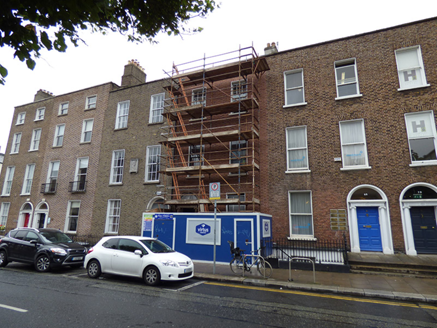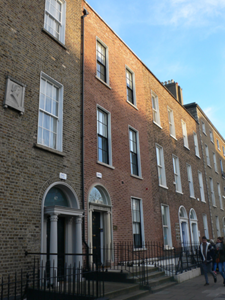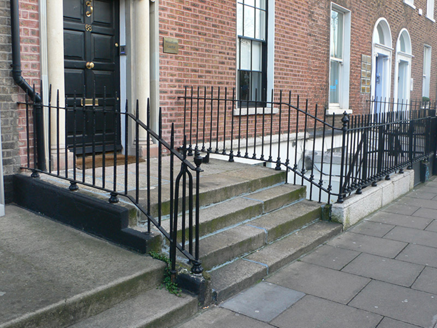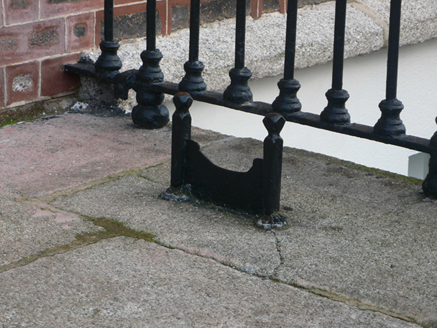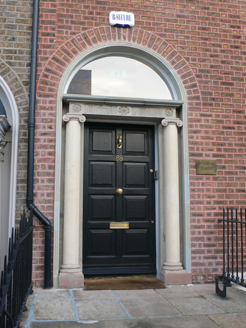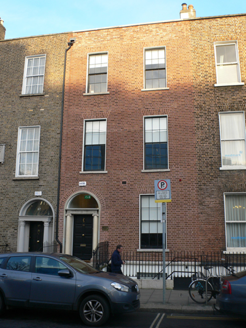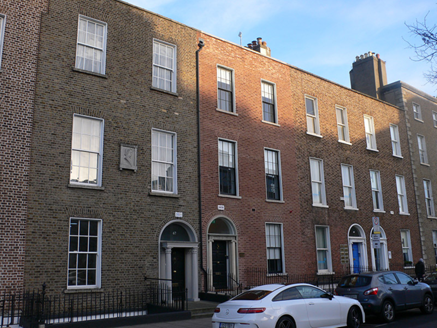Survey Data
Reg No
50100694
Rating
Regional
Categories of Special Interest
Architectural, Artistic
Original Use
House
In Use As
House
Date
1820 - 1830
Coordinates
316898, 233039
Date Recorded
29/07/2016
Date Updated
--/--/--
Description
Attached two-bay three-storey house over basement, built c. 1825 as one of terrace of three (Nos. 68-70), with hip-roofed three-storey return to west end of rear. M-profiled roof hipped to north, behind parapet with granite coping. Rendered chimneystacks to south party wall with replacement terracotta pots. Flemish bond red brick walling with recent wigged pointing on painted granite plinth course over rendered basement walling. Square-headed window openings with painted rendered reveals and granite sills. Six-over-six pane timber sliding sash windows above basement level, and eight-over-eight pane to basement; rear has timber sash windows, two-over-two pane to top floor. Round-headed doorway with moulded reveals, stone doorcase comprising Ionic columns, entablature with rosettes to frieze, plain fanlight and replacement timber panelled door. Granite entrance platform with four granite steps to street, and decorative cast-iron boot-scrape. Basement area enclosed by wrought-iron railings with decorative cast-iron posts on painted granite plinth. Two-storey rubble stone mews building to rear of plot.
Appraisal
A well retained early nineteenth-century house forming part of a terrace of three and part of a longer row. It is characterized by well-balanced proportions, neo-Classical doorcases and intact setting features. Although the group has been modified, with the loss of some historic fabric, including doors, fanlights and fenestration, the terrace contributes significantly to the architectural character of Baggot Street Lower and to the wider Georgian core of south Dublin. The recently executed wigged pointing adds interest to the property. Planned in the late 1780s, development of Baggot Street began towards the west end, but progress was hampered by recession in the 1790s and the majority of buildings were constructed in the early nineteenth century, with some gaps remaining until the mid-1840s. The variations in levels, materials, doorcase treatment and detailing across the streetscape, highlight the speculative nature of its development.
